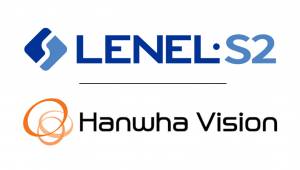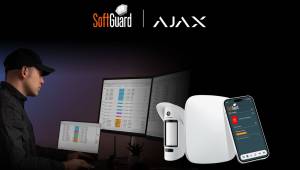 This column will give important guidelines to make an intervention in existing projects and make renewal of technology in Electronic Security in an efficient and fruitful way for all parties involved.
This column will give important guidelines to make an intervention in existing projects and make renewal of technology in Electronic Security in an efficient and fruitful way for all parties involved.
By Germán Alexis Cortés Hdez.*
Reliable Information
A situation that arises in these cases is the lack of technical, reliable and updated information on all existing spaces and equipment, pipeline routes, wiring and elements.
Many times there is no inventory of equipment, with references, serials, detailed connection plans, location in racks and interconnection rooms.
Other times, the references in the technical maintenance have been changed and the marking (identification of conductors) of signals and connection ports does not coincide with reality. Fruit of a disorderly, informal and improvised maintenance service.
Most co-properties do not have "as Builded" plans of the different subsystems and when contacting the companies they installed, it is discovered that they do not exist or that they do not have the latest plans.
Also, we must recognize that some companies in our guild, –annoying, because they did not continue to buy equipment from them, or because they do not have the maintenance or expansion contract–, simply indicate that there is no interest in providing the plans and other updated records.
Another aspect that generates distrust at the beginning, is that the architectural plans of the property are no longer useful, because the internal spaces have changed (especially in internal and private areas).
Faced with this situation of "blindness", there is only the alternative of making a detailed survey, which sometimes begins in the architectural aspect and only on updated plans, ducts, vertical steps and other elements of current electronic systems are located.
Finally, as if that were not enough, it is important to note that the false skies of the entire building are already located and to make initial surveys they must be raised for inspection, with the corresponding work, annoyance for residents and visitors and risk of damaging some other subsystem outside.
Knowing that these inconveniences and cost overruns must be generated, only for the start-up phase, before designing, purchasing and installing equipment, the decision is made (often wrong) not to uncover, assume quantities, routes and specifications of what "must have" and only when the installation of change, increase or adjustment of wiring is going to be done, raise the false sky and intervene.
The decision is risky because it often generates errors of appreciation and quantities; to discover already at the time of work, that things were not as expected and then it must be corrected at an inappropriate time, generating inconvenience to the administration and owners.
Our suggestion is that the surveys should be carried out by an interdisciplinary team (architect, engineer, facilities technician), which updates for sure the totality of spaces and subsystem, leaving no option to speculations that are almost always wrong.
It is necessary to understand that this generates an additional cost. However, the certainty of starting the Retrofit, with reliable information is very important.
Design
The design team should build on the latest and most recent risk analysis and begin its work on updated drawings.
It must also start from a list of existing elements within what is called a physical and functional Cadastre of electronic security equipment.
That is, it is not enough to have devices, it is required to know their operational status and it must be understood if the function it provides is sufficient or if it deserves to be changed by a model with better specifications.
And in the latter case, it must be defined what is going to be done with the previous device (unsubscribe (bounce), relocate to a site of less risk and importance, leave it as an element for spare or backup, give away or sell). This must be absolutely defined, because it becomes the "stone in the shoe", at the end of the Retrofit project.
Although the used equipment market is not common in Latin America, I must admit that it is a lucrative business in other latitudes. So, it is a possible way out for these elements, if the opportunity is found.
Then the Design team must decide together with the owners of the property, if some existing elements are going to be rescued to use them and integrate them into the new systems or the defined use.
This depends on the compatibility and technical convenience between new and old equipment.
It depends on each existing brand, the integrating companies with local support in each city and the real needs that the Designer analyzes.
Sometimes the "laziness" of the designer, means that a new design is always recommended, starting from the total replacement of equipment, in a subsystem; because it's much easier. Obviously tracing new pipeline routes, locating elements and not thinking about compatibilities is much easier, but it is not really what you are looking for in a Retrofit activity.
I do not deny that sometimes it is much better, but our intention is that we think that it should not be designed trying this as an initial solution, but rather as a consequence of deep and agreed analyses, which decide that a complete redesign is much more convenient for the end user.
In Retrofit, it is then common to know that the Design stage is much more complex than in a new construction. We must warn that this is only understood by experienced professionals who have already solved all the problems, in a property with operating systems.
Total or Partial Change, what to reuse?
To be efficient in a Retrofit process, you should not try to change everything, as an initial plan. That is, you should think about the finances of the end user and try to "rescue" as many elements as possible, and use them without affecting the performance and quality of the final system.
Then it should be remembered that systems have several parts:
1. Wiring
It depends on the existing type, the state of the cable (each segment must be tested), the topology used (star, bus, ring) and the clearances that exist in tip and tip to be able to uninstall and install again in other devices. For generic elements and without major specifications it is normal to be able to use part of the installed cable sections, but for new or special devices, it is likely that the existing cable will only serve as a "probe" to pull the new conductor.
The extracted cable sections usually do not serve much, unless they are long enough and used in other shorter sections.
Poorly installed, spliced, tight, messy wiring is usually lost when taken out of the duct (pipe or cable tray).
Our recommendation is that before using it, it is tested in detail for the use that will be given.
2. Ductwork
In closed pipe, it depends on the type (EMT or PVC) and current local regulations. Obviously it is required that the capacity of the existing pipe is adequate for the amount of Wiring to be used. It should be remembered that the NFPA70 recommends using only 40% of the total capacity of the pipeline, that is, that 60% of the cross-sectional area is not used.
Finally, it should be checked if the ductwork is properly installed (fixings, passage boxes, stability, marking).
The Open Cable Trays, almost always continue to serve for adjustments and changes, since their function is precisely that. Then all that needs to be checked is whether your capacity is still sufficient after the necessary wiring change.
Again its stability, weight capacity and fixings are important when it comes to identifying if it can be reused.
3. Remote Devices (in the field)
Obviously in a Retrofit process, you want to change, update and improve many devices, but there are some that for their simplicity and compatibility (dry contacts) are not required to change, for example: magnetic contacts, electromagnets, camera supports, sensors in doors and emergency stations, gas sensors, emergency signals, among many others.
The Retrofit Designer must identify existence and functionality on the one hand and detail of use, wear and maintenance, to make the decision to re-use this type of simple elements within the new safety scheme.
In that case you must indicate if they are used in the same place where they are located or if they can be reused in another use.
4. Devices in Control Room
The vast majority of controllers, servers, control panels and video recorders, really become the object where change is most desired. Not necessarily because of its poor performance, but as we have said before, because there are new models with better performance.
Then it is in the Control room where the biggest changes are made, however, it is not required to change everything. For example: UPS, batteries, power supplies, cabinets, racks, HVAC systems, among others, can almost always continue to operate satisfactorily with new systems.
Note: The Control Room is often the only thing that the end user sees, so if you are going to do a remodeling, it is important that some aesthetic and functional aspects are taken into account so that the change is noticeable.
5. Software and Licenses
Almost always the packages of VMS, Access, Monitoring and Control, BMS, Communications and Integration, are called to evolve in a more remarkable way. So it is almost obvious that when making a Retrofit, these packages are changed or updated.
The base licenses, of the operating system or of basic modules, can remain the same, if their release date is less than 3-4 years. But it is recommended to use the latest versions of basic packages and operating systems, which provide greater security, efficiency and agility in operation.
6. Accessories and Furniture
Power supplies, electrical panels, equipment cabinets, closed racks, work surfaces, monitor stands, chairs, among others, are accessories that complete the security system in a control room.
The Retrofit can evaluate which of these elements can continue to function properly, but it is recommended that some be renewed, with the aim of helping that sense of change that the end user, owners and operators are waiting for.
*If you wish to contact the author of this article write the emails: [email protected] - [email protected]

























Leave your comment